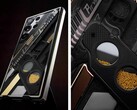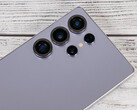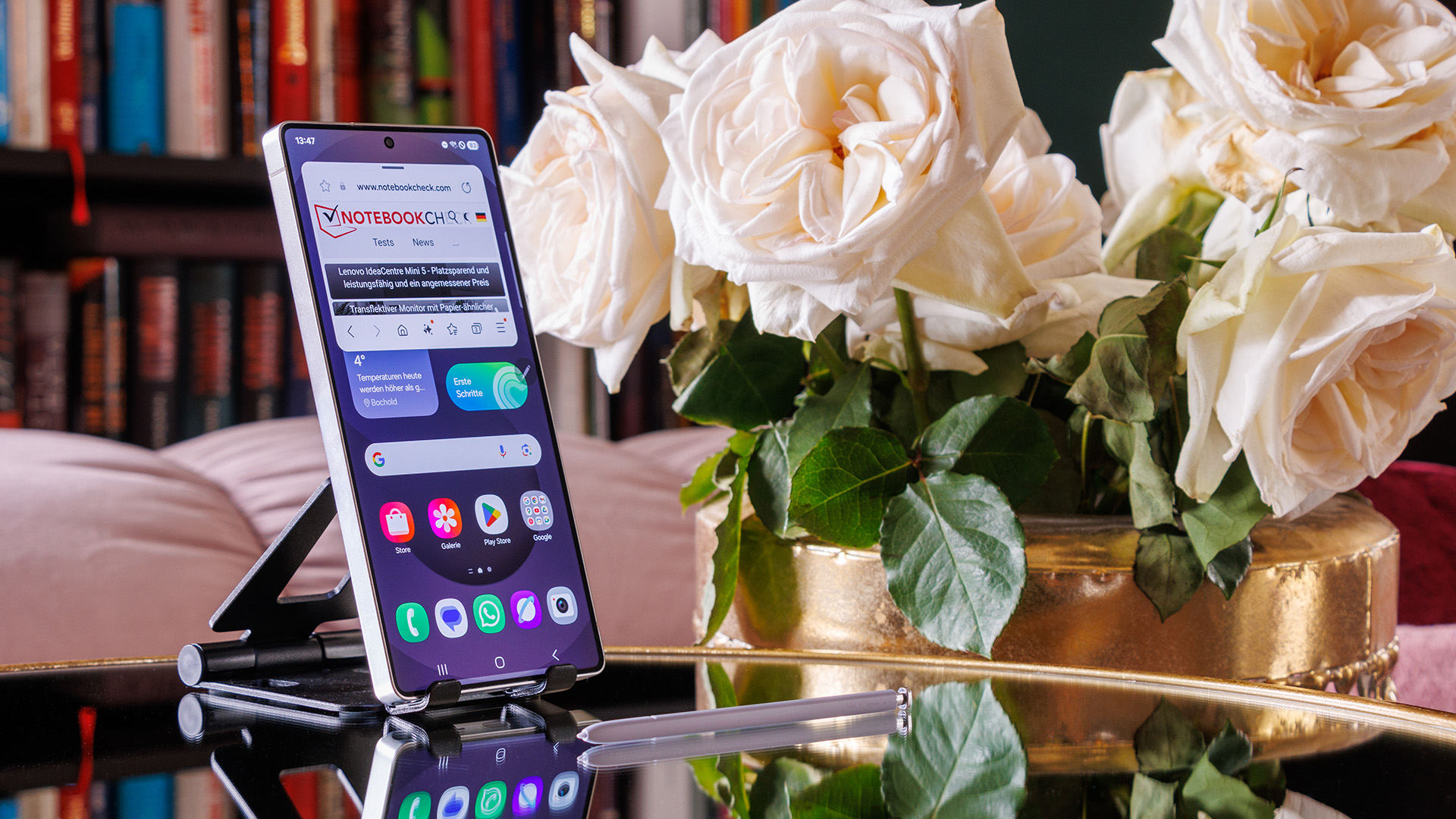
Samsung Galaxy S25 Ultra review - The AI phone relies fully on artificial intelligence and small hardware upgrades
Benchmark.
On its datasheet, the changes are only minimal. In addition to a new Snapdragon processor, the Galaxy S25 Ultra features a new ultra-wide-angle lens, and AI agents have been added to Galaxy AI. Our review will clarify whether this was enough for the phone to climb to the top position in our test.Daniel Schmidt, 👁 Daniel Schmidt (translated by Daisy Dickson) Published 🇩🇪 🇫🇷 ...
Verdict - Samsung has raised the bar for Android smartphones
On the hardware side, the Samsung Galaxy S25 Ultra doesn't really offer many new features—let alone groundbreaking innovations—with its Snapdragon 8 Elite for Galaxy and improved ultra-wide-angle lens. However, its overall package is still very coherent and will be the benchmark for Android smartphones in 2025.
The high-end smartphone lives up to its name and has no major gaps in its features. Its portfolio has been further expanded regarding its AI functions, and only a few competitors offer seven years of updates.
The Galaxy S25 Ultra didn't prove to be completely flawless during our test, either: Its Bluetooth audio codec selection is still small and even LC3 is missing. In terms of its camera setup, the phone's 3x optical zoom with its small sensor is now a little outdated. In addition, some users will definitely miss the S Pen's Bluetooth function.
Pros
Cons
Price and availability
You can order the Galaxy S25 Ultra directly from Samsung's online store, with prices starting at $1,299.99.
The Samsung phone is also available from most major online retailer such as Amazon.
Possible alternatives compared
Image | Model / Review | Price | Weight | Drive | Display |
|---|---|---|---|---|---|
| Samsung Galaxy S25 Ultra Qualcomm Snapdragon 8 Elite for Galaxy ⎘ Qualcomm Adreno 830 ⎘ 12 GB Memory, 256 GB | Amazon: 1. $14.99 Super Fast Charger Type C, 2... 2. $13.59 AACL 3-Pack for Samsung Gala... 3. $7.58 firtstnow 3 Pack Glass Scree... List Price: 1449€ | 218 g | 256 GB UFS 4.0 Flash | 6.90" 3120x1440 498 PPI Dynamic AMOLED 2X | |
| Apple iPhone 16 Pro Max Apple A18 Pro ⎘ Apple A18 Pro GPU ⎘ 8 GB Memory, 256 GB NVMe | Amazon: 1. $39.99 Apple iPhone 16 Pro Max Clea... 2. $8.98 Ailun 3 Pack Screen Protecto... 3. $6.98 Ailun 3 Pack Screen Protecto... List Price: 1449€ | 227 g | 256 GB NVMe | 6.90" 2868x1320 458 PPI Super Retina XDR OLED | |
| Google Pixel 9 Pro XL Google Tensor G4 ⎘ ARM Mali-G715 MP7 ⎘ 16 GB Memory, 256 GB | Amazon: 1. $1,088.99 Google Pixel 9 Pro XL - Unlo... 2. $8.49 OMOTON 3+2 Pack for Google P... 3. $7.99 Supershieldz (3 Pack) Design... List Price: 1299€ | 221 g | 256 GB UFS 3.1 Flash | 6.80" 2992x1344 482 PPI OLED | |
| Honor Magic7 Pro Qualcomm Snapdragon 8 Elite ⎘ Qualcomm Adreno 830 ⎘ 12 GB Memory, 512 GB | Amazon: 1. $11.99 Ibywind Screen Protector For... 2. $7.99 Lucyliy (3 Pack) Compatible ... 3. $8.99 MOOISVS 2+2Pack for Honor Ma... List Price: 1300€ | 223 g | 512 GB UFS 4.0 Flash | 6.80" 2800x1280 453 PPI OLED | |
| Oppo Find X8 Pro Mediatek Dimensity 9400 ⎘ ARM Immortalis-G925 MC12 ⎘ 16 GB Memory, 512 GB | Amazon: 1. $12.02 [1-Pack] for Oppo Find X8 Pr... 2. $15.99 AKABEILA [3 Pack Privacy Scr... 3. $9.99 WRTBS Phone Case for Oppo Fi... List Price: 1199€ | 215 g | 512 GB UFS 4.0 Flash | 6.78" 2780x1264 450 PPI AMOLED | |
| Xiaomi 14 Ultra Qualcomm Snapdragon 8 Gen 3 ⎘ Qualcomm Adreno 750 ⎘ 16 GB Memory, 512 GB | Amazon: $1,220.00 List Price: 1500€ | 219.8 g | 512 GB UFS 4.0 Flash | 6.73" 3200x1440 521 PPI AMOLED |
Table of Contents
- Verdict - Samsung has raised the bar for Android smartphones
- Specifications: Samsung Galaxy S25 Ultra
- Case - The AI phone with Gorilla Armor 2 and IP68
- Connectivity - The S Pen in the Galaxy S25 Ultra now without Bluetooth
- Software - Galaxy AI has become even better
- Communication and GNSS - Faster WLAN with 5 GHz
- Telephone functions and call quality
- Cameras - Samsung has only delivered one new lens
- Accessories and warranty - Limited scope of delivery, lots of options
- Input devices & operation - The S25 Ultra with an ultrasonic fingerprint sensor
- Display - Slightly dimmer than its predecessor
- Performance - More power thanks to the Snapdragon 8 Elite for Galaxy
- Games - Buttery smooth at up to 120fps
- Emissions - Good speakers in the Galaxy S25 Ultra
- Battery life - Charging at up to 45 watts
- Notebookcheck final rating
The Samsung Galaxy S25 Ultra is the successor to the Galaxy S24 Ultra and looks very similar to it. Its data sheet also reveals lots of similarities. However, in addition to the obligatory SoC upgrade, Samsung has revised part of its camera setup, and the S Pen now has to make do without Bluetooth. The phone's charging speed has also been improved. The biggest change, however, is the new One UI 7.0, which comes with extensive improvements to Galaxy AI and can now make use of AI agents.
The Samsung Galaxy S25 Ultra is again available in three storage and seven color variants:
- 12/256 GB | $1,299.99
- 12/512 GB | $1,419.99
- 12/1,024 GB | $1,659.99
Specifications: Samsung Galaxy S25 Ultra
Case - The AI phone with Gorilla Armor 2 and IP68
Like its predecessor, the Samsung Galaxy S25 Ultra once again features a titanium alloy frame. Thankfully, however, its weight has been significantly reduced to only 218 grams (S24 Ultra: 232 g). It has also gotten a little slimmer: Samsung states its height as 8.2 mm, while we measured 8.35 mm. The camera lenses protrude up to an additional 3.3 mm from the back.
All titanium frames have a matte finish. This year, there are four colors to choose from: Titanium Gray, Titanium Black, Titanium Whitesilver and Titanium Silverblue. Samsung also offers the exclusive colors Titanium Jetblack, Jadegreen and Pinkgold in its own store. While Gorilla Armor 2 is used as protective glass on the front, Corning Gorilla Glass Victus 2 is used on the back. The latter is slightly frosted, but fingerprints are still clearly visible on our Silverblue version.
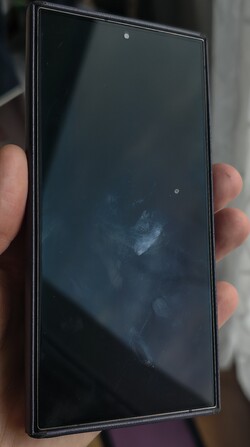
Gorilla Armor 2 is said to be even more durable and apparently has improved anti-reflective properties. When it came to the S24 Ultra, there were complaints about its display coating wearing off, which can lead to unsightly streaking (we reported). We were unable to find out whether this has been improved with the new generation, but we were able to provide some concrete figures: there are just 50 known cases for the S24 Ultra in Germany (as of January 2025, source: Samsung), which is an extremely small proportion of the devices sold. This can be repaired free of charge under the device's warranty if necessary; if the device already has physical damage, the optional Care+ plan would be an option.
The Galaxy S25 Ultra's build quality is impeccable. All gaps are tight and even. Plus, neither pressure nor twisting attempts seem to put excessive strain on the smartphone, with the latter only producing a slight creaking noise. The Samsung phone is once again IP68 dust and waterproof. Its metal SIM tray is flush with its frame and can hold up to two nano SIM cards.
Connectivity - The S Pen in the Galaxy S25 Ultra now without Bluetooth
The Samsung Galaxy S25 Ultra supports Bluetooth 5.4, NFC, UWB and USB 3.2 (Gen 1). The latter can also be used for wired image output, including an optional desktop mode (Samsung DeX). Data transfers using this interface were good in our copying test, reaching 268.52 MB/s. Connected data carriers can be formatted with FAT32, exFAT or NTFS but using NTFS, data can only be read out.
The S Pen stylus is also back on board, but now without Bluetooth. This has probably been a victim of EU regulations, as the pen's battery has to be replaceable. As a result, functions such as remote shutter release are no longer available.
Software - Galaxy AI has become even better
The Samsung Galaxy S25 Ultra comes with Google Android 15 and One UI 7.0 and is set to receive updates for seven years (until January 31, 2032). Security patches will be rolled out monthly in the first few years. The first update was a long time coming, but the S25 Ultra is now up to date with security patches from February 1, 2025. Only the Play system updates are still from October 1, 2024.
Samsung has improved existing AI functions with its new UI and has introduced AI agents for the first time, which should allow more natural interaction with the digital assistant. For example, you can now use voice commands in the Photos app to search for images at specific times or places. Or you can get restaurant recommendations, create a calendar entry straight after, and send an invitation message to selected friends. Recipe suggestions can also be created from photographed food.
Another new feature is AI Select, which can anticipate needs and make recommendations based on the selected content. This is somewhat reminiscent of Honor's Magic Portal, but always requires at least one further intermediate step. In return, its selection options during direct image processing are more plentiful.
The briefing function summarizes data from apps. This is currently limited primarily to Samsung and Google apps, but you can also use it for Spotify. The interface is open to all app developers. At the end of the day, a summary can be created that summarizes past events and reminds you of expiring vouchers or upcoming trips.
There has also been an innovation made to the phone's lock screen in the shape of the so-called Now Bar. This can display information and trigger immediate actions. It can be customized extensively.
Sustainability
The packaging of the Samsung Galaxy S25 Ultra is plastic-free. Repairability is said to have been further improved compared to its predecessor and spare parts, self-repair kits and repair instructions are once again available for the new model.
Samsung provides detailed environmental data on its devices on its website, but the data for the S25 series was not yet available at the time of testing.
Communication and GNSS - Faster WLAN with 5 GHz
The Samsung Galaxy S25 Ultra supports all common Wi-Fi standards, including Wi-Fi 7. In combination with our reference router, the Asus ROG Rapture GT-AXE11000, it achieved high and largely stable transmission rates. The 160 MHz band is also available for the 5 GHz network, almost doubling its speeds compared to its predecessor. Using the Netgear Nighthawk RS600 Wi-Fi 7 router, the S25 Ultra even managed up to 3,752 MBit/s (6 GHz) or 1,842 MBit/s (5 GHz).
Connected to the mobile data network, the Galaxy S25 Ultra supports all modern standards, and it boasted good reception in a city environment during our test. Its frequency coverage is ample, so you shouldn't face any connectivity problems in most countries around the world.
| Networking | |
| Samsung Galaxy S25 Ultra | |
| iperf3 transmit AXE11000 | |
| iperf3 receive AXE11000 | |
| iperf3 transmit AXE11000 6GHz | |
| iperf3 receive AXE11000 6GHz | |
| Apple iPhone 16 Pro Max | |
| iperf3 transmit AXE11000 | |
| iperf3 receive AXE11000 | |
| iperf3 transmit AXE11000 6GHz | |
| iperf3 receive AXE11000 6GHz | |
| Google Pixel 9 Pro XL | |
| iperf3 transmit AXE11000 | |
| iperf3 receive AXE11000 | |
| iperf3 transmit AXE11000 6GHz | |
| iperf3 receive AXE11000 6GHz | |
| Honor Magic7 Pro | |
| iperf3 transmit AXE11000 | |
| iperf3 receive AXE11000 | |
| iperf3 transmit AXE11000 6GHz | |
| iperf3 receive AXE11000 6GHz | |
| Oppo Find X8 Pro | |
| iperf3 transmit AXE11000 6GHz | |
| iperf3 receive AXE11000 6GHz | |
| Xiaomi 14 Ultra | |
| iperf3 transmit AXE11000 | |
| iperf3 receive AXE11000 | |
| iperf3 transmit AXE11000 6GHz | |
| iperf3 receive AXE11000 6GHz | |
| Samsung Galaxy S24 Ultra | |
| iperf3 transmit AXE11000 | |
| iperf3 receive AXE11000 | |
| iperf3 transmit AXE11000 6GHz | |
| iperf3 receive AXE11000 6GHz | |
| Average Wi-Fi 7 | |
| iperf3 transmit AXE11000 | |
| iperf3 receive AXE11000 | |
| iperf3 transmit AXE11000 6GHz | |
| iperf3 receive AXE11000 6GHz | |
| Average of class Smartphone | |
| iperf3 transmit AXE11000 | |
| iperf3 receive AXE11000 | |
| iperf3 transmit AXE11000 6GHz | |
| iperf3 receive AXE11000 6GHz | |
The Galaxy S25 Ultra's satellite fix is quick and precise, even indoors. The Samsung smartphone uses dual-band GNSS with all global satellite networks.
We compared its location accuracy with the Garmin Venu 2 on a short walk. The Samsung phone proved to be more accurate near buildings than the fitness smartwatch, as well as when walking around a pond.
Telephone functions and call quality
Compared to its predecessor, nothing much has changed about its telephone functions: The Galaxy S25 Ultra supports dual SIM—either with two nano-SIM cards, two eSIMs or a combination of both. Functions such as VoLTE and Wi-Fi calls are also supported.
Its call quality is very good when held up to your ear. Our call participants could be clearly understood during our test and the Ultra user's voice was transmitted really naturally. Background noise was filtered out very reliably. However, when it was extremely loud, the user's voice seemed a little muffled, but the background noise wasn't audible. In loudspeaker mode, the Samsung phone delivered a similarly good performance with a good microphone range. The AI live translations familiar from the S24 Ultra are also possible again.
Cameras - Samsung has only delivered one new lens
The Samsung Galaxy S25 Ultra uses the same front camera as last year's model. It again has an autofocus and can record videos in Ultra HD at up to 60fps. It takes nice selfies in daylight. Portraits can be given a new look using Portrait Studio: Watercolor, sketch, comic or 3D cartoon. We ran our selfie through all four AI filters.
The main camera on the back is once again made up of four lenses that are almost identical to those of the Galaxy S24 Ultra—only the ultra-wide-angle camera has been redesigned by Samsung. This now relies on a Samsung GN3 sensor with a 50-MPix resolution and is again responsible for macro shots. Its photos look good when used in ultra-wide-angle mode, but details are lost towards the edge of the image and the depths are emphasized a little too much, and the contrast suffers as a result. This works better in macro mode, even if the subject is then captured a little too dark.
The main camera features the same 200-MPix sensor that was already used in the Galaxy S23 Ultra. The photos are reduced to a size of 12 MPix via pixel binning, but you can also take photos in 24, 50 or 200 MPix. The results are impressive both in daylight and in low-light environments. However, a direct comparison with the OnePlus 13 in daylight shows that it is definitely possible to capture more details. Our shot at the pond in particular looks comparatively pale, but this was also taken with the old software.
Image comparison
Choose a scene and navigate within the first image. One click changes the position on touchscreens. One click on the zoomed-in image opens the original in a new window. The first image shows the scaled photograph of the test device.
Main cameraMain cameraUltra-wide angleMacroLow lightThe other two lenses consist of a 3x and a 5x optical zoom. The former in particular looks pretty outdated with its small 10 MPix sensor. Nevertheless, the Galaxy S25 Ultra features very good zoom abilities. Its image stabilization in particular is extremely good.
The five-fold zoom is a particularly positive feature and the photos taken at ten times magnification are still good. The maximum 100x zoom is certainly helpful in some situations, but the quality is by no means outstanding.
Only a few changes have been made to its video recording. The resolution ranges from 720p to 8k and the image stabilization is again impressive. However, innovations come more from the software side. For example, the phone now features an Audio Eraser, which, similar to the iPhone 16 Pro Max, allows you to edit much more of the audio track directly on the device and can reduce or even remove loud background noise, for example.
Using Nightography, even more impressive videos should be possible in the dark, which is made possible by improved noise suppression, among other things. In addition, videos can now be recorded with LOG, which offers more options for post-processing. This is available in all resolutions / frame rates.
| Mode | Aspect ratios | Resolution |
|---|---|---|
| Photo | Full, 1:1, 16:9, 4:3 | 12 / 50 / 200 MPix |
| Pro | Full, 1:1, 16:9, 4:3 | 12 / 50 MPix |
| Expert RAW | 4:3 | 12 / 24 / 50 / 200 MPix |
| Video | Full, 1:1, 16:9 | HD (30 FPS), Full HD (30/60 FPS), Ultra HD (30/60 FPS), 8k (30 FPS) |
| Pro Video | Full, 1:1, 16:9, 21:9 | HD (30 FPS), Full HD (24/30/60/120 FPS), Ultra HD (24/30/60/120 FPS), 8k (24/30 FPS) |
Under controlled lighting conditions, the color reproduction of the Galaxy S25 Ultra was even more natural than that of its predecessor and we didn't note any major outliers.
The test chart was also captured well. Fine details in the center of the image were slightly distorted due to the camera's sharp focus, and the sharpness decreased slightly towards the edges of the photo. Some details were swallowed up, especially in larger color areas.
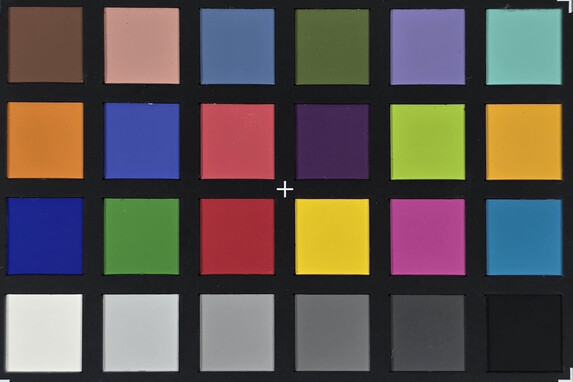
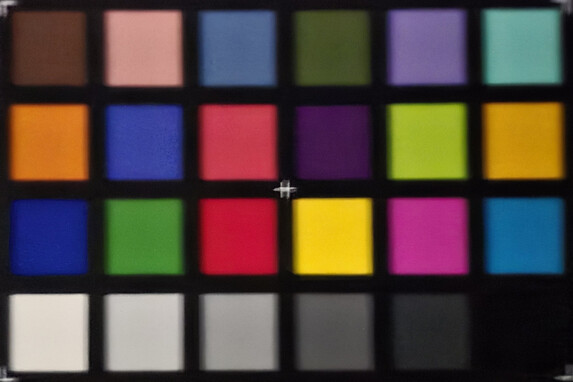
Accessories and warranty - Limited scope of delivery, lots of options
The Samsung Galaxy S25 Ultra is only supplied with a USB-C cable and a SIM tool. A suitable power adapter or other accessories are optionally available directly from Samsung. Cases and other accessories are available from third-party providers such as Torras, who kindly provided us with some for our test. These are equipped with a ring that is both magnetic, for example to lock onto a MagSafe charger, but can also be folded out so that it can be used as a stand. The Torras Stand Cases are available from Amazon, for example.
In the United States, the Galaxy S25 Ultra is covered by a standard 12-month warranty, which can be extended via the Care+ insurance package. This costs between $100 and $300, depending on the coverage period and scope of insurance.
Input devices & operation - The S25 Ultra with an ultrasonic fingerprint sensor
The Galaxy S25 Ultra uses a capacitive touchscreen, on which inputs are implemented quickly and precisely and which feels nice and smooth. The panel supports the active S Pen stylus, which we already know from the previous models. Its range of functions has shrunk slightly due to its lack of Bluetooth support, meaning that the S Pen can no longer be used as a remote trigger, for example.
The Samsung smartphone's linear vibration motor provides a crisp feedback and can be fully customized in the settings. The same applies to the function button, which no longer starts Bixby directly, but instead launches Google Assistant. You can configure this in the settings, and it is also possible to use it as a classic power button again.
Users can access an ultrasonic fingerprint sensor integrated into the display for biometric security. This recognizes stored prints quickly and reliably. Alternatively or additionally, less secure facial recognition can be set up via the front-facing camera.
Display - Slightly dimmer than its predecessor
The Samsung Galaxy S25 Ultra's AMOLED display has grown slightly to 6.9 inches (17.526 cm), which is mainly due to its narrower bezels. Its high resolution (QHD+) enables content to look razor-sharp and its refresh rate is dynamically adjusted by the system between 1 and 120 Hz using LTPO technology.
While the panel's brightness is slightly higher in the center of the screen when displaying all-white areas, it has been reduced by 5% or 6% when showing smaller white sections (APL18) and during HDR playback. As its brightness is still very high, this shouldn't be noticeable during everyday use.
The Dynamic AMOLED 2X flickers at 240 Hz at minimum brightness, which isn't particularly high. Samsung doesn't use high-frequency PWM dimming, but increases the panel's frequency to 480 Hz as the brightness increases. Even though the amplitude is very flat, sensitive people may still experience some discomfort. On the other hand, the display can be dimmed to a very high level, which puts less strain on your eyes in dark environments. If this is still too bright for you, you can even reduce the brightness to 0.67 cd/m² using the Extra Dimming function.
| |||||||||||||||||||||||||
Brightness Distribution: 94 %
Center on Battery: 1357 cd/m²
Contrast: ∞:1 (Black: 0 cd/m²)
ΔE Color 3.1 | 0.5-29.43 Ø4.83
ΔE Greyscale 2.2 | 0.09-98 Ø5.1
97.7% sRGB (Calman 2D)
Gamma: 2
| Samsung Galaxy S25 Ultra Dynamic AMOLED 2X, 3120x1440, 6.9" | Apple iPhone 16 Pro Max Super Retina XDR OLED, 2868x1320, 6.9" | Google Pixel 9 Pro XL OLED, 2992x1344, 6.8" | Honor Magic7 Pro OLED, 2800x1280, 6.8" | Oppo Find X8 Pro AMOLED, 2780x1264, 6.8" | Xiaomi 14 Ultra AMOLED, 3200x1440, 6.7" | Samsung Galaxy S24 Ultra Dynamic AMOLED 2X, 3120x1440, 6.8" | |
|---|---|---|---|---|---|---|---|
| Screen | 1% | 53% | 32% | 25% | 8% | -8% | |
| Brightness middle | 1357 | 1055 -22% | 2148 58% | 1607 18% | 1167 -14% | 997 -27% | 1317 -3% |
| Brightness | 1350 | 1061 -21% | 2050 52% | 1609 19% | 1160 -14% | 1002 -26% | 1365 1% |
| Brightness Distribution | 94 | 93 -1% | 86 -9% | 95 1% | 98 4% | 96 2% | 94 0% |
| Black Level * | |||||||
| Colorchecker dE 2000 * | 3.1 | 1.5 52% | 0.5 84% | 0.9 71% | 0.87 72% | 1.6 48% | 3.4 -10% |
| Colorchecker dE 2000 max. * | 4.7 | 4.7 -0% | 1.4 70% | 1.8 62% | 1.64 65% | 3.3 30% | 5 -6% |
| Greyscale dE 2000 * | 2.2 | 2.3 -5% | 0.8 64% | 1.7 23% | 1.4 36% | 1.8 18% | 2.8 -27% |
| Gamma | 2 110% | 2.21 100% | 2.23 99% | 2.24 98% | 2.311 95% | 2.19 100% | 2 110% |
| CCT | 6391 102% | 6625 98% | 6582 99% | 6346 102% | 6426 101% | 6493 100% | 6458 101% |
* ... smaller is better
| Display / APL18 Peak Brightness | |
| Google Pixel 9 Pro XL | |
| Samsung Galaxy S24 Ultra | |
| Samsung Galaxy S25 Ultra | |
| Apple iPhone 16 Pro Max | |
| Honor Magic7 Pro | |
| Display / HDR Peak Brightness | |
| Honor Magic7 Pro | |
| Samsung Galaxy S24 Ultra | |
| Google Pixel 9 Pro XL | |
| Samsung Galaxy S25 Ultra | |
| Apple iPhone 16 Pro Max | |
Screen Flickering / PWM (Pulse-Width Modulation)
| Screen flickering / PWM detected | 240 Hz Amplitude: 14.89 % Secondary Frequency: 480 Hz | ||
The display backlight flickers at 240 Hz (worst case, e.g., utilizing PWM) . The frequency of 240 Hz is relatively low, so sensitive users will likely notice flickering and experience eyestrain at the stated brightness setting and below. In comparison: 53 % of all tested devices do not use PWM to dim the display. If PWM was detected, an average of 8350 (minimum: 5 - maximum: 343500) Hz was measured. | |||
Measurement series with fixed zoom level and different brightness settings (The amplitude curve at minimum brightness looks flat, but this is due to the scaling. The info box shows the enlarged version of the amplitude at minimum brightness).
While we were still complaining about the Galaxy S24 Ultra that the phones' color accuracy has steadily deteriorated in recent years, we are happy to report that it has improved again on the S25 Ultra.
You can achieve the best display using the screen mode Natural, although there is a slight yellow tint in some grayscales and there are also some visible outliers in the colors. This should really be a little better on a high-end smartphone, but it isn't noticeable during everyday use.
Display Response Times
| ↔ Response Time Black to White | ||
|---|---|---|
| 1.72 ms ... rise ↗ and fall ↘ combined | ↗ 0.8525 ms rise | |
| ↘ 0.871 ms fall | ||
| The screen shows very fast response rates in our tests and should be very well suited for fast-paced gaming. In comparison, all tested devices range from 0.1 (minimum) to 240 (maximum) ms. » 8 % of all devices are better. This means that the measured response time is better than the average of all tested devices (20.5 ms). | ||
| ↔ Response Time 50% Grey to 80% Grey | ||
| 0.87 ms ... rise ↗ and fall ↘ combined | ↗ 0.4795 ms rise | |
| ↘ 0.3935 ms fall | ||
| The screen shows very fast response rates in our tests and should be very well suited for fast-paced gaming. In comparison, all tested devices range from 0.165 (minimum) to 636 (maximum) ms. » 2 % of all devices are better. This means that the measured response time is better than the average of all tested devices (32.1 ms). | ||
The Samsung Galaxy S25 Ultra makes an excellent impression outdoors. Its Corning Gorilla Armor 2 ensures low reflections and it has more than enough brightness reserves.
If you do without the ambient light sensor, you'll have less brightness at your disposal (414 cd/m²). If you use the Additional Brightness option, you can increase this to up to 740 cd/m².
Performance - More power thanks to the Snapdragon 8 Elite for Galaxy
The processor used in the Samsung Galaxy S25 Ultra is a Qualcomm Snapdragon 8 Elite for Galaxy with 12 GB LPDDR5x RAM. In this variant of the Snapdragon 8 Elite, the two prime cores (4.47 GHz instead of 4.30 GHz) clock slightly higher.
As a result, the Samsung smartphone delivered slightly higher CPU performance than the other high-end competitors during our test, even outperforming the iPhone 16 Pro Max in the multi-core performance test of Geekbench 6. It also came out on top in terms of system speed in PCMark and Crossmark. The system works very smoothly during everyday use, with latencies only occurring when carrying out AI functions.
| UL Procyon AI Inference for Android - Overall Score NNAPI | |
| Oppo Find X8 Pro | |
| Samsung Galaxy S25 Ultra | |
| Average Qualcomm Snapdragon 8 Elite for Galaxy (21837 - 23281, n=4) | |
| Honor Magic7 Pro | |
| Average of class Smartphone (1267 - 81594, n=143, last 2 years) | |
| Xiaomi 14 Ultra | |
The integrated Adreno 830 is used as a graphics unit inside the phone, which also features a slightly higher maximum clock rate and can run at up to 1,200 MHz.
The Galaxy S25 Ultra could always be found in first place during the 3DMark tests, while it couldn't always reach the top position in the GFXBench test, probably due to its heat development.
GFXBench (DX / GLBenchmark) 2.7: T-Rex Onscreen | 1920x1080 T-Rex Offscreen
GFXBench 3.0: on screen Manhattan Onscreen OGL | 1920x1080 1080p Manhattan Offscreen
GFXBench 3.1: on screen Manhattan ES 3.1 Onscreen | 1920x1080 Manhattan ES 3.1 Offscreen
GFXBench: on screen Car Chase Onscreen | 1920x1080 Car Chase Offscreen | on screen Aztec Ruins High Tier Onscreen | 2560x1440 Aztec Ruins High Tier Offscreen | on screen Aztec Ruins Normal Tier Onscreen | 1920x1080 Aztec Ruins Normal Tier Offscreen | 3840x2160 4K Aztec Ruins High Tier Offscreen
Geekbench 6.4: GPU Vulkan
| 3DMark / Wild Life Extreme Unlimited | |
| Samsung Galaxy S25 Ultra | |
| Honor Magic7 Pro | |
| Oppo Find X8 Pro | |
| Apple iPhone 16 Pro Max | |
| Xiaomi 14 Ultra | |
| Google Pixel 9 Pro XL | |
| 3DMark / Wild Life Extreme | |
| Samsung Galaxy S25 Ultra | |
| Oppo Find X8 Pro | |
| Honor Magic7 Pro | |
| Xiaomi 14 Ultra | |
| Apple iPhone 16 Pro Max | |
| Google Pixel 9 Pro XL | |
| 3DMark / Wild Life Unlimited Score | |
| Samsung Galaxy S25 Ultra | |
| Honor Magic7 Pro | |
| Apple iPhone 16 Pro Max | |
| Xiaomi 14 Ultra | |
| Google Pixel 9 Pro XL | |
| 3DMark / Solar Bay Score | |
| Samsung Galaxy S25 Ultra | |
| Honor Magic7 Pro | |
| Oppo Find X8 Pro | |
| Apple iPhone 16 Pro Max | |
| Xiaomi 14 Ultra | |
| 3DMark / Solar Bay Unlimited Score | |
| Samsung Galaxy S25 Ultra | |
| Honor Magic7 Pro | |
| Oppo Find X8 Pro | |
| Xiaomi 14 Ultra | |
| Apple iPhone 16 Pro Max | |
| 3DMark / Steel Nomad Light Unlimited Score | |
| Samsung Galaxy S25 Ultra | |
| Honor Magic7 Pro | |
| Oppo Find X8 Pro | |
| Apple iPhone 16 Pro Max | |
| Google Pixel 9 Pro XL | |
| 3DMark / Steel Nomad Light Score | |
| Samsung Galaxy S25 Ultra | |
| Honor Magic7 Pro | |
| Apple iPhone 16 Pro Max | |
| Oppo Find X8 Pro | |
| Google Pixel 9 Pro XL | |
| GFXBench (DX / GLBenchmark) 2.7 / T-Rex Onscreen | |
| Xiaomi 14 Ultra | |
| Samsung Galaxy S25 Ultra | |
| Honor Magic7 Pro | |
| Apple iPhone 16 Pro Max | |
| Oppo Find X8 Pro | |
| GFXBench (DX / GLBenchmark) 2.7 / T-Rex Offscreen | |
| Oppo Find X8 Pro | |
| Samsung Galaxy S25 Ultra | |
| Honor Magic7 Pro | |
| Apple iPhone 16 Pro Max | |
| Xiaomi 14 Ultra | |
| GFXBench 3.0 / Manhattan Onscreen OGL | |
| Xiaomi 14 Ultra | |
| Samsung Galaxy S25 Ultra | |
| Honor Magic7 Pro | |
| Oppo Find X8 Pro | |
| Apple iPhone 16 Pro Max | |
| GFXBench 3.0 / 1080p Manhattan Offscreen | |
| Samsung Galaxy S25 Ultra | |
| Oppo Find X8 Pro | |
| Honor Magic7 Pro | |
| Xiaomi 14 Ultra | |
| Apple iPhone 16 Pro Max | |
| GFXBench 3.1 / Manhattan ES 3.1 Onscreen | |
| Samsung Galaxy S25 Ultra | |
| Honor Magic7 Pro | |
| Xiaomi 14 Ultra | |
| Apple iPhone 16 Pro Max | |
| Oppo Find X8 Pro | |
| GFXBench 3.1 / Manhattan ES 3.1 Offscreen | |
| Oppo Find X8 Pro | |
| Honor Magic7 Pro | |
| Samsung Galaxy S25 Ultra | |
| Xiaomi 14 Ultra | |
| Apple iPhone 16 Pro Max | |
| GFXBench / Car Chase Onscreen | |
| Honor Magic7 Pro | |
| Samsung Galaxy S25 Ultra | |
| Xiaomi 14 Ultra | |
| Apple iPhone 16 Pro Max | |
| Oppo Find X8 Pro | |
| GFXBench / Car Chase Offscreen | |
| Oppo Find X8 Pro | |
| Honor Magic7 Pro | |
| Samsung Galaxy S25 Ultra | |
| Xiaomi 14 Ultra | |
| Apple iPhone 16 Pro Max | |
| GFXBench / Aztec Ruins High Tier Onscreen | |
| Honor Magic7 Pro | |
| Samsung Galaxy S25 Ultra | |
| Xiaomi 14 Ultra | |
| Apple iPhone 16 Pro Max | |
| Oppo Find X8 Pro | |
| Google Pixel 9 Pro XL | |
| GFXBench / Aztec Ruins High Tier Offscreen | |
| Samsung Galaxy S25 Ultra | |
| Oppo Find X8 Pro | |
| Honor Magic7 Pro | |
| Xiaomi 14 Ultra | |
| Apple iPhone 16 Pro Max | |
| Google Pixel 9 Pro XL | |
| GFXBench / Aztec Ruins Normal Tier Onscreen | |
| Samsung Galaxy S25 Ultra | |
| Honor Magic7 Pro | |
| Xiaomi 14 Ultra | |
| Google Pixel 9 Pro XL | |
| Apple iPhone 16 Pro Max | |
| Oppo Find X8 Pro | |
| GFXBench / Aztec Ruins Normal Tier Offscreen | |
| Honor Magic7 Pro | |
| Oppo Find X8 Pro | |
| Samsung Galaxy S25 Ultra | |
| Xiaomi 14 Ultra | |
| Apple iPhone 16 Pro Max | |
| Google Pixel 9 Pro XL | |
| GFXBench / 4K Aztec Ruins High Tier Offscreen | |
| Samsung Galaxy S25 Ultra | |
| Honor Magic7 Pro | |
| Oppo Find X8 Pro | |
| Xiaomi 14 Ultra | |
| Apple iPhone 16 Pro Max | |
| Google Pixel 9 Pro XL | |
| Geekbench 6.4 / GPU Vulkan | |
| Samsung Galaxy S25 Ultra | |
| Honor Magic7 Pro | |
| Xiaomi 14 Ultra | |
| Google Pixel 9 Pro XL | |
The Galaxy S25 Ultra was similarly impressive in the browser benchmarks, coming very close to the iPhone 16 Pro Max in some cases.
| Jetstream 2 - 2.0 Total Score | |
| Apple iPhone 16 Pro Max (Safari Mobile 18.0.1) | |
| Samsung Galaxy S25 Ultra (Chrome 132) | |
| Average Qualcomm Snapdragon 8 Elite for Galaxy (236 - 334, n=4) | |
| Honor Magic7 Pro (Chrome 131) | |
| Oppo Find X8 Pro (Chrome 131) | |
| Samsung Galaxy S24 Ultra (Chrome 121) | |
| Xiaomi 14 Ultra (Chrome 123) | |
| Average of class Smartphone (13.8 - 387, n=156, last 2 years) | |
| Speedometer 2.0 - Result | |
| Apple iPhone 16 Pro Max (Safari Mobile 18.0.1) | |
| Average Qualcomm Snapdragon 8 Elite for Galaxy (425 - 585, n=4) | |
| Samsung Galaxy S25 Ultra (Chrome 132) | |
| Honor Magic7 Pro (Chrome 131) | |
| Oppo Find X8 Pro (Chrome 131) | |
| Samsung Galaxy S24 Ultra (Chrome 121) | |
| Xiaomi 14 Ultra (Chrome 123) | |
| Average of class Smartphone (15.2 - 585, n=138, last 2 years) | |
| Speedometer 3.0 - Score | |
| Apple iPhone 16 Pro Max (Safari Mobile 18.0.1) | |
| Average Qualcomm Snapdragon 8 Elite for Galaxy (29 - 31.6, n=4) | |
| Samsung Galaxy S25 Ultra (Chrome 132) | |
| Honor Magic7 Pro (Chrome 131) | |
| Oppo Find X8 Pro (Chrome 131) | |
| Average of class Smartphone (1.03 - 34, n=104, last 2 years) | |
| Xiaomi 14 Ultra (Chrome 123) | |
| WebXPRT 4 - Overall | |
| Apple iPhone 16 Pro Max (Safari Mobile 18.0.1) | |
| Average Qualcomm Snapdragon 8 Elite for Galaxy (236 - 244, n=4) | |
| Samsung Galaxy S25 Ultra (Chrome 132) | |
| Honor Magic7 Pro (Chrome 131) | |
| Samsung Galaxy S24 Ultra (Chrome 121) | |
| Xiaomi 14 Ultra (Chrome 123) | |
| Oppo Find X8 Pro (Chrome 131) | |
| Average of class Smartphone (22 - 273, n=150, last 2 years) | |
| Octane V2 - Total Score | |
| Apple iPhone 16 Pro Max (Safari Mobile 18.0.1) | |
| Samsung Galaxy S25 Ultra (Chrome 132) | |
| Average Qualcomm Snapdragon 8 Elite for Galaxy (95809 - 99202, n=4) | |
| Honor Magic7 Pro (Chrome 131) | |
| Samsung Galaxy S24 Ultra (Chrome 121) | |
| Google Pixel 9 Pro XL (Chrome 129) | |
| Oppo Find X8 Pro (Chrome 131) | |
| Xiaomi 14 Ultra (Chrome 123) | |
| Average of class Smartphone (2228 - 100368, n=203, last 2 years) | |
| Mozilla Kraken 1.1 - Total | |
| Average of class Smartphone (277 - 28190, n=159, last 2 years) | |
| Xiaomi 14 Ultra (Chrome 123) | |
| Oppo Find X8 Pro (Chrome 131) | |
| Samsung Galaxy S24 Ultra (Chrome 121) | |
| Honor Magic7 Pro (Chrome 131) | |
| Average Qualcomm Snapdragon 8 Elite for Galaxy (377 - 389, n=4) | |
| Samsung Galaxy S25 Ultra (Chrome 132) | |
| Apple iPhone 16 Pro Max (Safari Mobile 18.0.1) | |
* ... smaller is better
As expected, the Samsung phone's UFS 4.0 storage is super fast, but proved to be a little weak when it came to its transfer rates when handling small data blocks.
| Samsung Galaxy S25 Ultra | Google Pixel 9 Pro XL | Honor Magic7 Pro | Oppo Find X8 Pro | Xiaomi 14 Ultra | Samsung Galaxy S24 Ultra | Average 256 GB UFS 4.0 Flash | Average of class Smartphone | |
|---|---|---|---|---|---|---|---|---|
| AndroBench 3-5 | -22% | 5% | -11% | 21% | -11% | 9% | -22% | |
| Sequential Read 256KB | 3823.28 | 1850.5 -52% | 3910.81 2% | 3482.9 -9% | 4102.56 7% | 3610.25 -6% | 3711 ? -3% | 2145 ? -44% |
| Sequential Write 256KB | 3361.24 | 1280.56 -62% | 3683.81 10% | 3498.5 4% | 3095.36 -8% | 1893.63 -44% | 2724 ? -19% | 1738 ? -48% |
| Random Read 4KB | 287.85 | 310.88 8% | 282.34 -2% | 375.7 31% | 362.88 26% | 437.12 52% | 385 ? 34% | 293 ? 2% |
| Random Write 4KB | 331.61 | 398.27 20% | 357.04 8% | 100.4 -70% | 527.15 59% | 181.55 -45% | 413 ? 25% | 335 ? 1% |
Games - Buttery smooth at up to 120fps
Its large high-resolution display and good speakers provide a good foundation for the Samsung Galaxy S25 Ultra as a gaming smartphone. It features the currently most powerful GPU, the Adreno 830, so you don't have to compromise on details or frame rates.
In the GameBench test, it had no problem reaching 120fps and the frame rates always remained stable—even when running a demanding game such as Genshin Impact.
Emissions - Good speakers in the Galaxy S25 Ultra
Temperature
The Galaxy S25 Ultra's surface temperatures remained harmless at all times during our test and never rose above 43.5 °C, even under constant load.
Things unfortunately looked less rosy in the 3DMark stress tests, as the Samsung smartphone lost around 50% of its performance over time. However, it still stayed the fastest smartphone in the comparison field. The ROG Phone 9 Pro, which was hardly throttled at all, showed that more is possible.
(±) The maximum temperature on the upper side is 42.2 °C / 108 F, compared to the average of 35.1 °C / 95 F, ranging from 21.9 to 63.7 °C for the class Smartphone.
(±) The bottom heats up to a maximum of 43.5 °C / 110 F, compared to the average of 34.1 °C / 93 F
(+) In idle usage, the average temperature for the upper side is 24.4 °C / 76 F, compared to the device average of 32.8 °C / 91 F.
3DMark Steel Nomad stress test
| 3DMark | |
| Wild Life Stress Test Stability | |
| Apple iPhone 16 Pro Max | |
| Oppo Find X8 Pro | |
| Google Pixel 9 Pro XL | |
| Xiaomi 14 Ultra | |
| Honor Magic7 Pro | |
| Samsung Galaxy S25 Ultra | |
| Samsung Galaxy S24 Ultra | |
| Wild Life Extreme Stress Test | |
| Google Pixel 9 Pro XL | |
| Xiaomi 14 Ultra | |
| Apple iPhone 16 Pro Max | |
| Oppo Find X8 Pro | |
| Samsung Galaxy S24 Ultra | |
| Samsung Galaxy S25 Ultra | |
| Solar Bay Stress Test Stability | |
| Apple iPhone 16 Pro Max | |
| Xiaomi 14 Ultra | |
| Oppo Find X8 Pro | |
| Samsung Galaxy S24 Ultra | |
| Samsung Galaxy S25 Ultra | |
| Honor Magic7 Pro | |
| Steel Nomad Light Stress Test Stability | |
| Google Pixel 9 Pro XL | |
| Samsung Galaxy S24 Ultra | |
| Apple iPhone 16 Pro Max | |
| Honor Magic7 Pro | |
| Oppo Find X8 Pro | |
| Samsung Galaxy S25 Ultra | |
Speakers
The Galaxy S25 Ultra's two speakers deliver a balanced sound at medium volume, but as the volume increases, it becomes noticeable that the mids should be a little stronger. Nevertheless, Samsung offers some of the best speakers in a smartphone.
Alternatively, sound can be output via USB-C, and the S25 Ultra is able to start an Auracast broadcast. Although it only supports a comparatively small selection of codecs via Bluetooth, it is also possible to stream to two headphones or speakers simultaneously—although only the basic SBC codec is used in this case.
Samsung Galaxy S25 Ultra audio analysis
(+) | speakers can play relatively loud (93 dB)
Bass 100 - 315 Hz
(-) | nearly no bass - on average 21.5% lower than median
(+) | bass is linear (4.8% delta to prev. frequency)
Mids 400 - 2000 Hz
(+) | balanced mids - only 4.3% away from median
(+) | mids are linear (4.4% delta to prev. frequency)
Highs 2 - 16 kHz
(+) | balanced highs - only 3.3% away from median
(+) | highs are linear (1.4% delta to prev. frequency)
Overall 100 - 16.000 Hz
(+) | overall sound is linear (14.6% difference to median)
Compared to same class
» 1% of all tested devices in this class were better, 2% similar, 97% worse
» The best had a delta of 12%, average was 36%, worst was 134%
Compared to all devices tested
» 17% of all tested devices were better, 4% similar, 79% worse
» The best had a delta of 4%, average was 24%, worst was 134%
Apple iPhone 16 Pro Max audio analysis
(+) | speakers can play relatively loud (92.6 dB)
Bass 100 - 315 Hz
(-) | nearly no bass - on average 17.5% lower than median
(+) | bass is linear (4.9% delta to prev. frequency)
Mids 400 - 2000 Hz
(+) | balanced mids - only 4% away from median
(+) | mids are linear (4.1% delta to prev. frequency)
Highs 2 - 16 kHz
(±) | higher highs - on average 7.8% higher than median
(+) | highs are linear (1.7% delta to prev. frequency)
Overall 100 - 16.000 Hz
(±) | linearity of overall sound is average (15.4% difference to median)
Compared to same class
» 3% of all tested devices in this class were better, 2% similar, 95% worse
» The best had a delta of 12%, average was 36%, worst was 134%
Compared to all devices tested
» 21% of all tested devices were better, 4% similar, 75% worse
» The best had a delta of 4%, average was 24%, worst was 134%
Battery life - Charging at up to 45 watts
Power consumption
While its power consumption in idle mode is very low, the Galaxy S25 Ultra is more power-hungry under load than its competitors with a Snapdragon 8 Elite.
Nominally, its charging speed hasn't changed compared to the predecessor model, with up to 45 watts wired and up to 15 watts wirelessly. The S25 Ultra can also supply other devices with energy in both ways. Nevertheless, its charging speeds have become a little faster, which is probably because its maximum charging power can be used for longer. One full charge only took 56 minutes during our test (50%: 17 min, 80%: 32 min, 90%: 40 min).
| Off / Standby | |
| Idle | |
| Load |
|
Key:
min: | |
| Samsung Galaxy S25 Ultra 5000 mAh | Apple iPhone 16 Pro Max 4685 mAh | Honor Magic7 Pro 5270 mAh | Oppo Find X8 Pro 5910 mAh | Xiaomi 14 Ultra 5000 mAh | Samsung Galaxy S24 Ultra 5000 mAh | Average Qualcomm Snapdragon 8 Elite for Galaxy | Average of class Smartphone | |
|---|---|---|---|---|---|---|---|---|
| Power Consumption | -9% | -38% | 15% | 4% | -31% | -9% | -27% | |
| Idle Minimum * | 0.55 | 0.42 24% | 0.94 -71% | 0.6 -9% | 0.8 -45% | 0.73 -33% | 0.515 ? 6% | 0.869 ? -58% |
| Idle Average * | 0.77 | 1.55 -101% | 1.5 -95% | 0.8 -4% | 0.89 -16% | 1.22 -58% | 1.005 ? -31% | 1.427 ? -85% |
| Idle Maximum * | 0.91 | 1.58 -74% | 1.57 -73% | 0.9 1% | 0.91 -0% | 1.34 -47% | 1.075 ? -18% | 1.588 ? -75% |
| Load Average * | 13.81 | 3.41 75% | 11.03 20% | 6.8 51% | 8.99 35% | 16.52 -20% | 14.1 ? -2% | 7.16 ? 48% |
| Load Maximum * | 16.69 | 11.82 29% | 11.68 30% | 10.9 35% | 9.01 46% | 16.58 1% | 16.5 ? 1% | 10.8 ? 35% |
* ... smaller is better
Power consumption: Geekbench (150 cd/m²)
Power consumption: GFXbench (150 cd/m²)
Runtimes
The Samsung Galaxy S25 Ultra's 5,000 mAh battery helps it achieve very good battery runtimes. But within the comparison field, the Oppo Find X8 Pro in particular lasts much longer, but this is mainly thanks to its larger battery.
| Samsung Galaxy S25 Ultra 5000 mAh | Apple iPhone 16 Pro Max 4685 mAh | Google Pixel 9 Pro XL 5060 mAh | Honor Magic7 Pro 5270 mAh | Oppo Find X8 Pro 5910 mAh | Xiaomi 14 Ultra 5000 mAh | Samsung Galaxy S24 Ultra 5000 mAh | |
|---|---|---|---|---|---|---|---|
| Battery Runtime | 28% | -25% | -2% | 20% | -40% | -11% | |
| Reader / Idle | 2750 | 4226 54% | 2527 -8% | 3665 33% | 1983 -28% | 2227 -19% | |
| H.264 | 1935 | 1990 3% | 1806 -7% | 1976 2% | 1055 -45% | 1922 -1% | |
| WiFi v1.3 | 1331 | 1249 -6% | 998 -25% | 1481 11% | 1411 6% | 751 -44% | 1148 -14% |
| Load | 223 | 357 60% | 217 -3% | 309 39% | 131 -41% | 202 -9% |
Notebookcheck final rating
The Samsung Galaxy S25 Ultra may not have many new features on the hardware side, but it is still one of the best smartphones with Android.
Especially those who value extensive AI functions and a long update supply will hardly be able to avoid Samsung's top smartphone.
Samsung Galaxy S25 Ultra
- 03/14/2025 v8
Daniel Schmidt
Transparency
The selection of devices to be reviewed is made by our editorial team. The test sample was provided to the author as a loan by the manufacturer or retailer for the purpose of this review. The lender had no influence on this review, nor did the manufacturer receive a copy of this review before publication. There was no obligation to publish this review. We never accept compensation or payment in return for our reviews. As an independent media company, Notebookcheck is not subjected to the authority of manufacturers, retailers or publishers.
This is how Notebookcheck is testing
Every year, Notebookcheck independently reviews hundreds of laptops and smartphones using standardized procedures to ensure that all results are comparable. We have continuously developed our test methods for around 20 years and set industry standards in the process. In our test labs, high-quality measuring equipment is utilized by experienced technicians and editors. These tests involve a multi-stage validation process. Our complex rating system is based on hundreds of well-founded measurements and benchmarks, which maintains objectivity. Further information on our test methods can be found here.





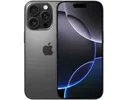








































































 Total Sustainability Score:
Total Sustainability Score: 


